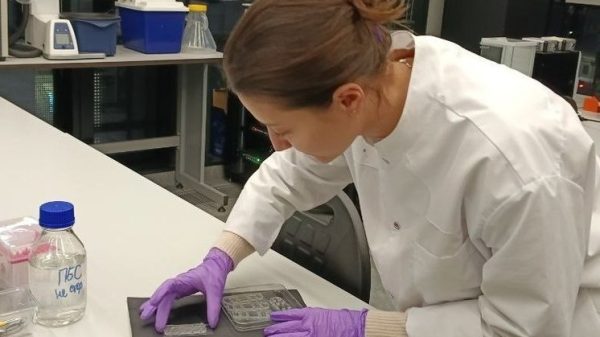
MOSCOW, January 18, Vladislav Strekopytov. New information obtained as a result of a general analysis of ancient DNA has clarified the genetic history of the European population over the past 15 thousand years. The common idea of a single origin of Europeans turned out to be incorrect. It also became clear who brought various diseases to the continent and in what era.
Three waves of migration
There were three waves of migration to Europe. About 45 thousand years ago, when the last glaciation began to decline, the first anatomically modern people arrived on the continent — primitive hunter-gatherers. Then, about 11 thousand years ago, tribes from the Middle East arrived here, having already mastered agriculture. And five thousand years ago, nomadic shepherds-cattle-breeders from the steppes of Western Asia and the Northern Black Sea region, traveling on oxcarts — representatives of the Yamnaya culture — invaded.
For a long time it was not possible to understand in detail the ethnogenesis of Europeans due to the poor preservation of ancient DNA and the imperfection of analytical methods. Historians and archaeologists conventionally believed that the waves of migration were uniform for the entire continent, ethnic groups gradually replaced each other, and the population of different regions acquired certain phenotypic traits depending on the degree of mixing or as a result of adaptation to local living conditions.
Recently, four articles (1, 2, 3, 4) were published in the journal Nature, which summarized the results of a grandiose comprehensive study. The project involved 175 scientists from different countries, including Russia, under the guidance of professors Eske Willerslev from the University of Cambridge, Thomas Verge from the University of Copenhagen and Rasmus Nielsen from the University of California at Berkeley. Most of the work was carried out at the Center for Geogenetics at the University of Copenhagen. Samples were provided by numerous museums and scientific organizations in Europe and Asia.
Using the latest genomic sequencing methods, scientists analyzed the DNA of almost five thousand people who lived in Europe and Western Asia from the Late Paleolithic (34 thousand years ago) to the Viking Age, compared ancient DNA with genetic samples of hundreds of thousands of modern people stored in the UK Biobank, and constructed historical maps of the distribution of characteristic genes, as well as diseases associated with them.
Stages of the Neolithic Revolution
The results obtained made it possible, among other things, to determine when the most important event in the ancient history of mankind occurred in different parts of Europe — the transition from hunting and gathering to agriculture, which is also called the Neolithic Revolution, since it marks the end of the Mesolithic and the beginning of the Neolithic.
< br />Around 11,500 years ago, in the Middle East, in a region known as the Fertile Crescent, people transitioned from a nomadic existence based on hunting and gathering wild fruits to a sedentary lifestyle. As a result, permanent settlements and a farming culture arose. From here the Neolithic Revolution spread north into Anatolia (modern Turkey) and Europe.
New data has shown that the transition to agriculture began in the south and west of the continent 11 thousand years ago. The arrival of Anatolian farmers influenced the DNA of the population. Europeans acquired genes responsible for tolerance to vegetables and lactose — the ability to digest large amounts of plant foods and dairy products. The indigenous hunter-gatherers did not have this.
It was previously thought that the genes for lactose resistance were passed on to Europeans by the Yamniki, herders-pastoralists of the third wave of migration, who brought with them herds of domestic animals. In fact, they were Anatolians, and by the time the Yamniki arrived, the inhabitants of Europe were already ready to use dairy food.
For Eastern Europeans, these changes occurred three thousand years later, in the north — generally only a thousand years before the migration of the steppe people. Obviously, due to the climate: the agricultural methods of the Fertile Crescent took longer to take root there.
United, but different
The Yamniki genes appeared in all inhabitants of the continent almost simultaneously — about five thousand years ago. From this moment on, the “genetic border” between the southwest and northeast is erased, and a genetically united “European nation” arises.
Surprisingly, even then there was practically nothing left in the genome from the indigenous European hunter-gatherers of the Upper Paleolithic. But they were traditionally considered the main ancestors, assigning a secondary role to alien peoples. As it turned out, the primary population completely dissolved or was destroyed by the aliens. That is, today's Europeans can well be called a “nation of migrants.”
The phenotypic characteristics of the inhabitants of different parts of the continent are determined primarily by the migration routes of peoples. Since the farmers of the Middle East headed primarily to the south and west of Europe, the population there is short, dark-skinned, and dark-haired. Steppe herders migrated north, and from them came the tall stature, fair skin, eyes and hair of the Scandinavians.
In a separate article, scientists analyzed the process of ethnogenesis using the example of the Danes. In Denmark and Great Britain, where the Neolithic revolution arrived late, the primitive way of life was preserved until the 4th millennium BC. Then, 5,900 years ago, farmers coming from the south quickly, literally within a few generations, displaced the indigenous inhabitants. And a thousand years later, a wave of “pit-pit” people arrived here.
Tall, fair-haired, warlike nomads with copper weapons, traveling on fast wheeled carts, simply destroyed the indigenous northerners. Their genetic traces practically disappeared from the DNA of the Danes, Swedes and Norwegians four and a half thousand years ago.
“The newcomers did not expel the local inhabitants and did not mix with them, but most likely killed them all,” — The authors of the article believe.
This is how the Scandinavian Viking ethnos was formed.
“Basically, the genetic history of Europeans was laid outside of Europe,” Willerslev is quoted as saying in a press release from the University of Cambridge. “But once the migrants settled in geographically isolated areas of the continent, their traits became established in local populations.”

Genes and diseases
Genetic changes associated with migration waves affect not only hair growth and color, but also health problems. For example, northeastern Europe has the highest incidence of Alzheimer's disease and type 2 diabetes. The genes that determine susceptibility to these diseases were present in hunter-gatherers. Only in the east of the continent has a significant part of the genome of indigenous peoples been preserved.
Separately, scientists looked at the genetic risks of multiple sclerosis, a neurodegenerative disease in which the body’s immune system mistakenly attacks its own nerve cells.
Previously, biologists had identified 233 genetic variants that contribute to multiple sclerosis. It has now been established that some of them spread as the pastoralists of the third wave of migration moved across Europe. It is not surprising that multiple sclerosis is especially common in the Scandinavian countries, where the proportion of Yamnik DNA is highest.
Researchers suggest that the hyperimmune reaction initially provided the steppe peoples with an advantage, protecting them from infections in sheep and cattle.
» «Life is very different now in terms of hygiene, diet and treatment,” says one of the authors of the work, Professor Astrid Iversen from the University of Oxford. “And we may be more susceptible than them to certain diseases, in particular multiple sclerosis.”
In turn, in southwestern Europe, where there is more DNA from second-wave migrants, bipolar disorder is more often diagnosed. This is the legacy of Neolithic farmers from Asia Minor.
The historical approach to the genetic analysis of a particular population is expected to be extended to other regions.



































































Свежие комментарии